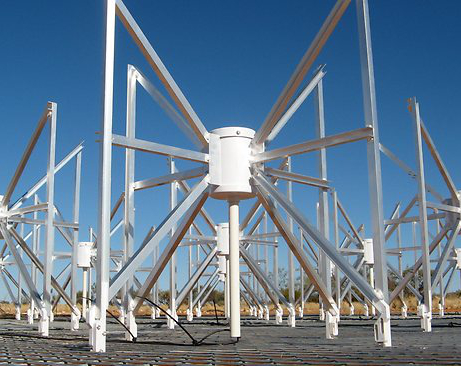Expert eyes on oldest stars
 A cutting-edge team has been formed to search for the oldest stars and galaxies in our universe.
A cutting-edge team has been formed to search for the oldest stars and galaxies in our universe.
Astrophysicists, telescopes, supercomputers, and software engineers have joined forces at the International Centre for Radio Astronomy Research (ICRAR) to search for signals from the beginning of time.
The team will apply its supermassive collective brain to hundreds of hours of observations from the Murchison Widefield Array (MWA) radio telescope collected over five years. The project involves an enormous 200 terabytes of data.
“We’re looking for the first stars and galaxies that formed after the Big Bang almost 13 billion years ago,” said Associate Professor Cathryn Trott, from the Curtin University node of ICRAR.
“The signals we’re looking for have travelled through the vast and expanding Universe for billions of years and are incredibly weak.”
“After their long journey, they wash over the Earth as low frequency radio waves, which can be easily drowned out by the radio noise we humans make and by the radio hum of the rest of the Universe.”
The MWA is located in one of the most radio-quiet locations in the world, at CSIRO’s Murchison Radio-astronomy Observatory in outback Western Australia.
The data travelled from the telescope to the Pawsey Supercomputing Centre in Perth, one of Australia’s tier-1 national high performance computing facilities and a long-standing and successful joint venture of CSIRO and WA’s four public universities, where they were stored and processed in painstaking fashion to extract the signals the team were searching for.
Of the 700 hours of observations sent to Pawsey from the telescope, 450 hours were selected for further processing.
The data was then transferred to the DownUnder GeoSolutions (DUG) supercomputer in West Perth, where their software engineering team optimised the processing algorithms and delivered the processed data in record time.
"We feel privileged to be involved in this incredibly interesting project,” said DUG Founder and Managing Director, Matt Lamont.
“DUG is comprised primarily of physicists and mathematicians focussed on developing algorithms and processing data on our own high-performance computer network,” he said.
“For the past 15 years we’ve been solving big data problems for the Oil and Gas Industry and now we’re branching out to work with new users looking for affordable supercomputing solutions and support to get their code up and running quickly.”








 Print
Print